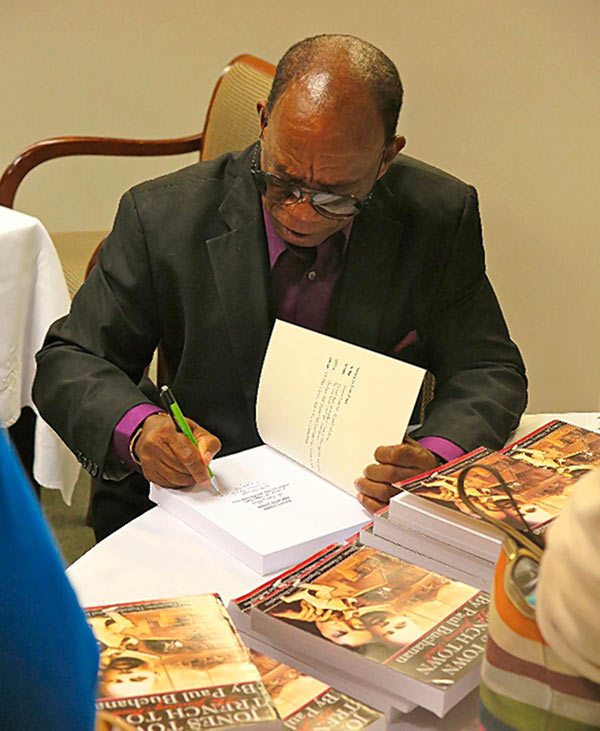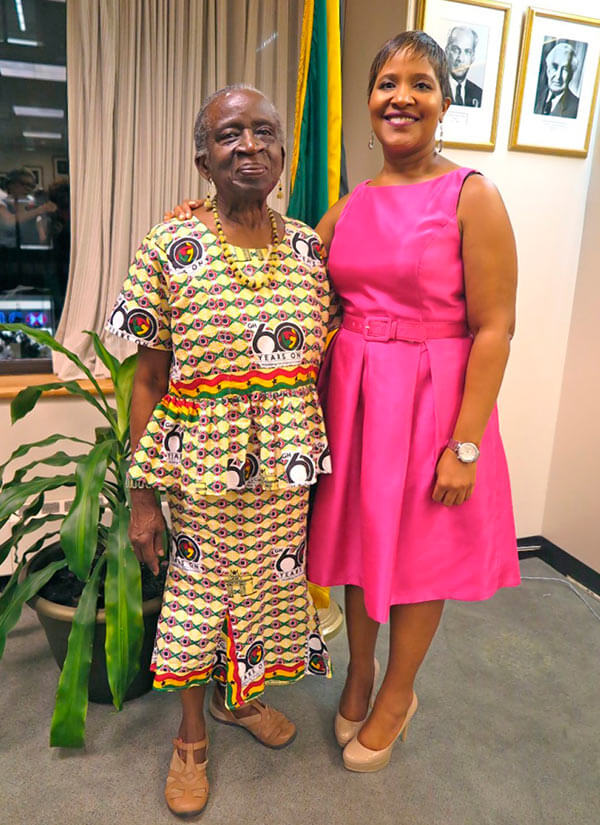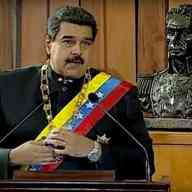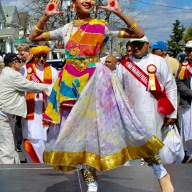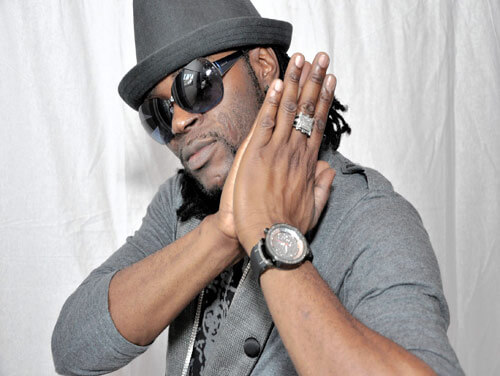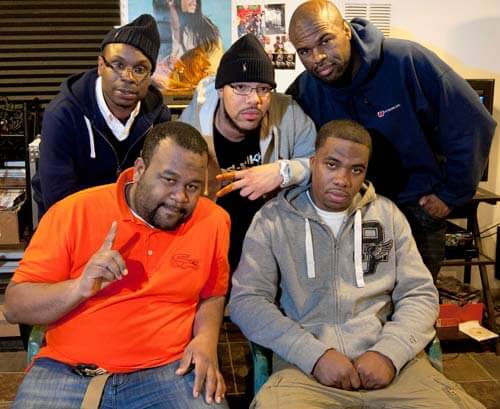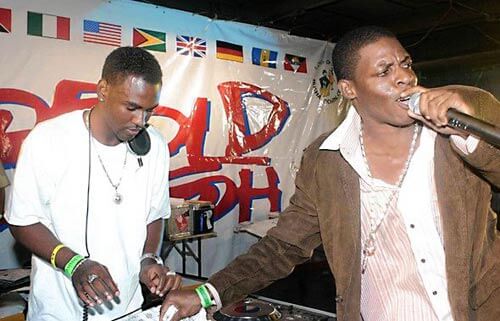Paul “Bucky” Buchanan, a former member of Jamaica’s Parliament stopped into his country’s consulate recently to meet with friends and associates and mostly to launch his book “Jones Town Trench Town The Journey Back.”
Raised in the areas most known as west Kingston, the educator, and former athlete summed up his 421-page book with a three-part assessment he defined to be “a study of greatness, degradation and redemption.”
The book’s launch was endorsed by Consular General Trudy Deans.
“Not always do they (dwellers) get recognized,” she said referring to residents and former residents of the much maligned communities.
“Only when they become famous,” she aptly stated.
Brooklyn’s Bishop C. Riley declared that his roots were nourished there.
The Pentecostal preacher said he moved around a lot while growing up.
Unlike most residents who remained at a single address, he admitted that his family moved around a lot, citing more than six streets he resided in the small enclave.
He also said although he lived in Jones Town, on visits to the island now he avoids venturing through it but tells people “I used to live over there.”
The 73-year-old vociferous immigrant might not be the only expat to distance himself from his past, from the documented publication more than a few seem to only make association for convenience.
It is little wonder that neglect, pride and disassociation are not added features to contributing factors of its degradation.
Often associated with overly-populated hubs, the depressed and neglected areas represent less than the uptown areas often labeled as Gardens or Heights.
Ironically, despite the stigma associated with the downtown communities, some of the brightest and best achievers from the island and city managed to establish global affinity with some of the often maligned areas garrisoned by political strife and borders.
Among them: entertainers Skatalites musicians Don Drummond and Roland Alphanso as well as Robert Nesta Marley, the avowed first Third World superstar.
When the transfer of government in Jamaica moved from Spanish Town to Kingston in 1872 a migratory population converged on the many towns — Rose Town, Franklyn Town, Rollington Town, August Town, Rae Town, Allman Town, Denham Town, Admiral Town, Vineyard Town, Hannah Town, Craig Town, Trench Town and Jones Town — in order to establish residency and pursue employment opportunity.
Marley’s ode to one area resounds as an anthem declaring that “Trench Town Rock.”
The singer’s lyrical tribute to Jones Town’s postal zone of “Kingston 12” also finds curious foreigners flocking to imagine life in the hamlet in yesteryear.
Buchannan attended Wolmers High School, the first free school, which was founded in 1729.
Although the school is located outside of any of the two towns, the author devotes pages to its alums and the institution’s Latin motto of “Age Quod Agis” (Do what you are doing well).
Buchannan seems to attribute much to athletes.
Cricket was his game and it probably was inevitable that he devoted chapters eight, nine, 10, 11 and 12 to sports figures who had no association to the two towns.
As a matter of fact, Bucky’s book seems to be a glossary or repository and talent bank exalting most of his colleagues; Jamaica’s most exemplary, as well as a few townspeople whose beginning years guided them to politics, science, law, sports, entertainment, literature, academia and profitable paths to success.
As far as the Jones Town achievers, he focuses on select areas of concentration and either glosses over or completely negates some Craig Town residents within JT, many of whom did not abandon the area and remain vital to the history of the community.
Currently he defines Jones Town as “a virtual wasteland in the middle of Kingston.”
Perhaps it is a consensus many might agree.
There are those who explained that first person accounts would have added to a more comprehensive book.
Inclusion of personal reflections to events such as the legends of Town Moor when Governor’s Cup winner, Frankie Minott ruled cycle sports at Racecourse AKA formerly George VI Memorial Park and the now-hallowed resting place of national heroes known as Heroes’ Park.
Racecourse was also the place recalled for hosting Telefunken Time, an outdoor music treat that attracted hundreds to see jazz greats.
Circus troupes from Brazil and other countries pitched tents there to entertain families.
As for Minott, he was idolized as a speed racer throughout the island.
He resided at Chisholm Ave. but on Penn St. he was a constant and regular visitor.
George Nelson was also a cyclist.
He was an acrobat who performed balancing skills on his two-wheeler.
He lived at 19 1/2 Penn St. with his father, brothers Claude, Aston, Norris and sisters — Enid and Dorothy (who blazed a trail establishing Dornid’s School of Beauty Culture).
Georgie (as he was known) regularly displayed those talents at Ambassador Theater, an entertainment showplace akin to Harlem’s Apollo Theater.
He also relentlessly pursued a career making the most comfortable and attractive shoes.
He was a shoemaker who could duplicate any designer’s leatherwork from a photograph.
Enid married to the name Anglin and should be credited for training many young women to become beauticians. After taking extensive courses in the field, students graduated with celebrated ceremonies held at Bournemouth Bath and later the Pegasus Hotel.
She also toiled as a councilor representing the People’s National Party to revive Jones Town.
That less than a line acknowledged the Nelson / Anglins’ devotion might have been an oversight in any literary document on Jones Town.
Along with that oversight, former residents of JT might have benefitted from reading about the days Jonkannoos danced through the streets at Christmas time; or nostalgically reflected on the nights the Salvation Army Band played “Onward Christian Soldiers” through Rodney St. Septimus St. Benbow St. Byrnes St. Penn St. etc.
Leroy “Dreamy” Riley, a former Denham Town resident who now lives in Florida said “Jones Town was where I used to get my vaccinations at the clinic.”
“To me it was my hospital, my medical center.”
A group of former west Kingston residents who annually picnic at Prospect Park on the second Saturday in August remembered a dancehall at 21 Penn St. where Dickey’s Dynamic Sound-system played the popular music of the era.
Dickey Wong — whose family operated a grocery store and bar — honed his skill as a deejay playing the hits of the day.
On a recent visit here U-Roy, the godfather of “toasting” said “21 is where I started before getting my break. I can never forget 21.”
“Pioneer and 21 were the liveliest dancehalls on the whole island,” U-Roy said.
That U-Roy perfected a music genre at that address before breaking onto the international music scene merits a chapter in this vital book.
At the time, colorful placards invited patrons to “come one come all” and for the gate fee of two shillings and sixpence, U-Roy and other deejays held sway talking over music to create “toasting” a form which transitioned to be emulated in the USA as rap.
Inside that address red coat and yellow coat plum trees, guinep, and lime trees, calabash and coconut trees grew tall.
On any given Saturday night when dances were held, coconut branches were cut from the trees to use as decoration and also to keep out free-loaders.
The book might have been enhanced by personal reflections about simplicities such as the route from Torrington Bridge to the garden park entrance to JT where varieties of flowers named canals, coleus, Joseph Coat sprouted beauty and nature.
George Peart, a former resident of Crooks St. on hearing about the book reminisced about Cracker John who lived at 11 A with his three daughters.
Peart added that he was quite familiar with Love St. resident Keith Brown, a public relations veteran lauded on page 73.
Peart talked with yours truly about a myriad of JT memories and seemed to recall more than a bookful of recollections about the rum bars and gambling outlets operated by Chinese businessmen.
There was a police station at the entrance to the town.
From the outside passersby could see jailed prisoners who elevated themselves to shout out from the burglar bars.
A church bell “tolled” to alert residents of the death of a neighbor.
And whether or not that practice was pervasive throughout other towns, to a young child growing up in Jones Town, the loud clanging of a church bell at odd hours was a practice explained by elders who pondered a loss without knowing the casualty.
Alien to many others was a creche which as a comfort care center to children was a common word every JT resident used in daily conversations.
On the far side from Penn St. to Asquith St. a qualified midwife delivered babies.
The woman assisted many mothers in labor.
She was the preferred community nurse to personally welcome newborns outside of a hospital setting.
Some Kingstonians may not have even known about the huge star apple tree that towered in the middle of Clarence Lane. Disclaimed as a “wasteland” there on the neglected thoroughfare, an oasis for the round, purple, sticky fruits hung high on the limbs amidst a preponderance of barrenness.
Artisans completed the all-inclusive community.
Dressmakers and tailors at every turn suited adults and children.
Winifred Pryce sewed, darned and designed outfits for tots and teens.
Across from her, a milliner made the most detailed hats.
She married a pen-pal, migrated and that ended the residency of one talented professional.
Probably unique to Jones Town were two identical twin sisters at Baker St. and Penn, along with sisters Bubbles and Chuckles, Chickie and Cherry, the Thompson twins and the author and twin brother to sister Blossom.
Common to the community during the same period were homeowners.
Most homes were legitimately owned by their dwellers.
It seems as if a downward spiral escalated when many moved uptown or migrated to England, Canada and USA leaving homes to become tenement yards.
From all accounts, the greatness of Jones Town diminished when it became a political garrison for PNP voters to stave off JLP supporters declaring borders keeping hostages in and out.
Hopefully, with the publication of this book, and help from some of the documented achievers, redemption might be on the horizon.
For more information on the book, contact paulb
— Catch You On The Inside
